The day after Thanksgiving, our family joined friends for a trek to Enchanted Rock, one of Central Texas’ most unique natural gems. Enchanted Rock is a large batholith, an underground rock formation exposed by erosion. 
To visitors, it appears as a giant dome of protruding pink granite, though in reality Enchanted Rock and its nearby sister domes are together only a small part of a much larger globe of granite formed a billion years ago. Humans have been visiting the ancient rock for an estimated 11,000 years.
Enchanted Rock beckons hikers to trek up the slope to get a 360° view of the beautiful surrounding Texas Hill Country. The elevation sits at a mere 1825 feet above sea level but only rises about 425 feet above the soil. That might not sound like much, but the slope is just steep enough to make many hikers pause periodically to catch their breath, and it’s worth cautioning folks with bad knees that going up and back down again can take its physical toll.
Weathering and other types of erosion over geologic time have given the rock its curved shape. Visible exfoliation on the rock’s flanks shows this work still in progress, with thick slabs sliding downhill. Elsewhere on the rock are mushroom-shaped blocks, formed over time by additional weathering.
Many blocks invite climbing, and advanced rock climbers scale the larger domes with ropes and carabiners. For those who don’t mind narrow spaces, there’s a cave on the northeast side, close to the top — flashlights are recommended, or even better, headlamps (or a phone app, but be careful not to drop your phone in there!). Be sure to look for the arrows that are in there to guide you, and seriously don’t attempt traversing the cave if you are claustrophobic — be prepared to crawl and maneuver through small holes in full darkness. That being said, it’s fun.
Along the surface of the dome, one might spot long linear lines called dikes. These formed long ago, when magma rushed to fill cracks along the granite.
From the top of Enchanted Rock, you can pause and reflect on the beauty of the surrounding hill country, enjoy a picnic, or just enjoy breathing the fresh air. Adventurous souls might seek out the northeastern caves at this point.

From the eastern side of Enchanted Rock, you might catch sight of visitors choosing to trek up a sister dome called Freshman Mountain. As you can see by the elevation difference, it’s much smaller but still quite impressive.
There’s plenty of plant and wildlife on Enchanted Rock. Plants grow where they can, in depressions and where eroded debris and blown-in soil accumulate in cracks and under boulders. In shallower soil, one might find ferns, cactus, tiny daisies, stonecrops, and other tough survivors. Where deeper soil has filled in cracks and depressions, trees and shrubs can grow. Lichen and mosses blanket many rocks.
Vernal pools, sometimes called weather pits, are depressions that temporarily store rainwater and other moisture. During such times, some of the pools support tiny invertebrates called fairy shrimp, whose life cycle allows them to survive desiccation. Other pools become islands of plants. Above is Texas Sacahuista (Nolina texana).

Despite the cold temperatures during our visit, hoverflies came out in multitude to visit the Eupatorium, or boneset, plants on top of Enchanted Rock.
After spending some time on the top and in the cave, our group decided to head back down via the eastern slope rather than returning to the main trail. It’s rather steep, as you can see above, and not for those with knee troubles. I recommend good hiking shoes if you are going this way. Note the dike visible in the rock. FYI, the view of Freshman Mountain shown a few photos above was taken from this slope.
Here’s a view from the lower portion of the eastern side of the dome, looking up.

Down below, there are trails one can following around and through the park, all with outstanding scenery.
A natural bridge of sorts can be seen just off the Loop Trail on the north side or the rock.
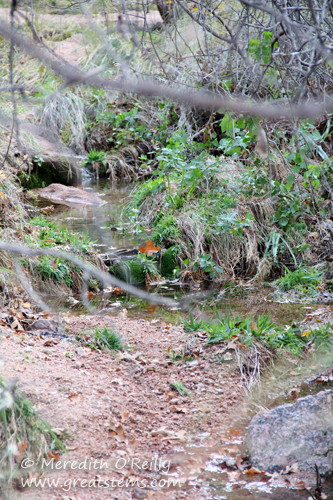
Some trails follow or cross over creeks. Along the way, you might spot coyote scat, many a bird, and more of Enchanted Rock’s most beautiful native Texas plants.
Blackjack Oaks, known for their tri-lobed bell-shaped leaves, are actually members of the Red Oak group. While the trees are found through the southeastern United States, there are only a few places farther west than Enchanted Rock (and the surrounding Gillespie County) that can boast Blackjack Oaks among their native plants. The oaks’ foliage turns a beautiful red in the fall.
Browning grasses, decorated with seeds, will provide food sources for wildlife throughout the cold months ahead.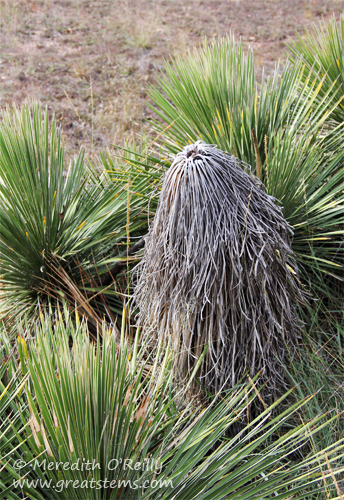 This dead yucca plant surrounded by its living family brings to mind Cousin Itt.
This dead yucca plant surrounded by its living family brings to mind Cousin Itt.
Of course, we can’t forget our dear prickly pear cactus.
Enchanted Rock is a state treasure, and one we love to visit whenever possible. I especially appreciated being there on the day after Thanksgiving, with other like-minded folks who wanted to get out to nature and avoiding the chaotic sales and ill-tempered crowds that take the “thankful” out of the holiday.
 I will say that another treat in visiting Enchanted Rock on the day after Thanksgiving was getting to enjoy the beautiful holiday lights (and delicious food) in Fredericksburg (above) and in Johnson City (below).
I will say that another treat in visiting Enchanted Rock on the day after Thanksgiving was getting to enjoy the beautiful holiday lights (and delicious food) in Fredericksburg (above) and in Johnson City (below).
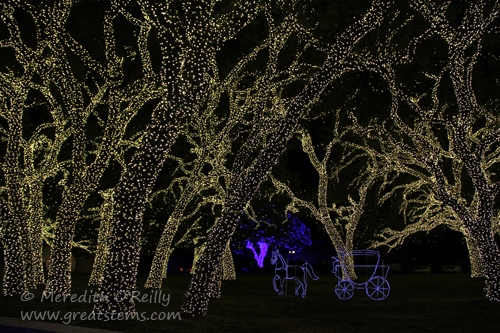
Pretty spectacular.






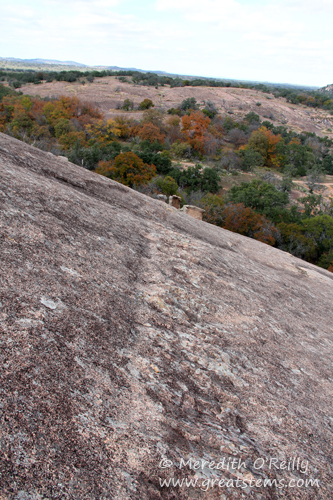








 Aggregating anemones, closed up during low tide, were covered in sand and broken shell bits, which help prevent desiccation. Interspersed among them were barnacles and small sea snails, which had their own methods to handle low-tide exposure.
Aggregating anemones, closed up during low tide, were covered in sand and broken shell bits, which help prevent desiccation. Interspersed among them were barnacles and small sea snails, which had their own methods to handle low-tide exposure. With fascination, we watched an underwater drama take place as this aggregating anemone actively attacked a nearby colony with its specialized stinging tentacles, called acorhagi. We had recently watched a similar attack at
With fascination, we watched an underwater drama take place as this aggregating anemone actively attacked a nearby colony with its specialized stinging tentacles, called acorhagi. We had recently watched a similar attack at  When acorn barnacles are overcrowded on a rock, they sometimes grow as a columnar formation, as you can see here.
When acorn barnacles are overcrowded on a rock, they sometimes grow as a columnar formation, as you can see here. Just below, this hermit crab tried to quickly hide, but I snapped a picture just in time.
Just below, this hermit crab tried to quickly hide, but I snapped a picture just in time. Present on other rocks were large aggregations of these beautiful dark Blue Mussels, also called Bay Mussels. They are relatively smooth in appearance, lacking the radiating ribs of the California Mussel.
Present on other rocks were large aggregations of these beautiful dark Blue Mussels, also called Bay Mussels. They are relatively smooth in appearance, lacking the radiating ribs of the California Mussel. This beautiful ochre sea star was very exposed, but I hoped the surging waters would soon cover it.
This beautiful ochre sea star was very exposed, but I hoped the surging waters would soon cover it.

 We saw Common Murres and Pigeon Guillemots on the rock, but we were particularly excited to see other members of the the auk family there — Tufted Puffins. We watched as they gathered fish from the sea and returned to their nesting spots on the rock.
We saw Common Murres and Pigeon Guillemots on the rock, but we were particularly excited to see other members of the the auk family there — Tufted Puffins. We watched as they gathered fish from the sea and returned to their nesting spots on the rock. Cannon Beach is also great for good old-fashioned play, particular in good weather. But despite the looming storm and rough waves, some visitors still spent time building castles in the sand.
Cannon Beach is also great for good old-fashioned play, particular in good weather. But despite the looming storm and rough waves, some visitors still spent time building castles in the sand. 
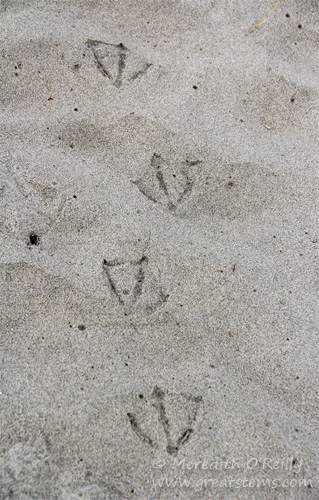
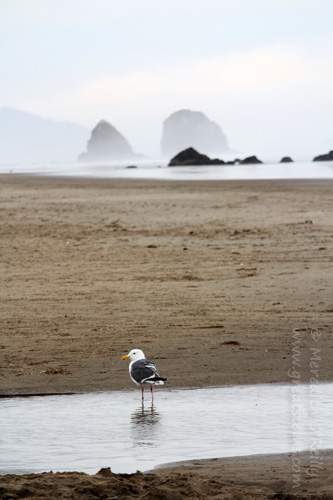

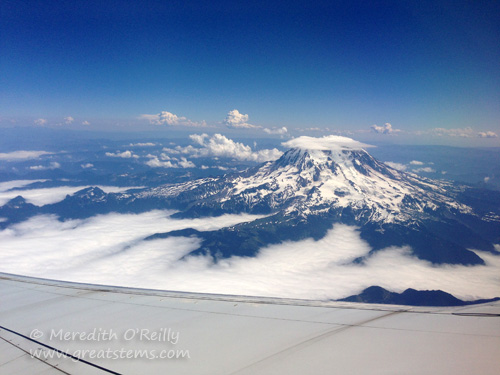
 It is so nice being on vacation with only a minimal schedule to follow. Until that morning, we’d never heard of Bandon State Park, yet there we were, and it was blue and beautiful. I’ll admit, however, that it was also very chilly and very windy. We actually broke out socks (which we wore ever so attractively with our Keens) and added long-sleeved shirts under our jackets.
It is so nice being on vacation with only a minimal schedule to follow. Until that morning, we’d never heard of Bandon State Park, yet there we were, and it was blue and beautiful. I’ll admit, however, that it was also very chilly and very windy. We actually broke out socks (which we wore ever so attractively with our Keens) and added long-sleeved shirts under our jackets.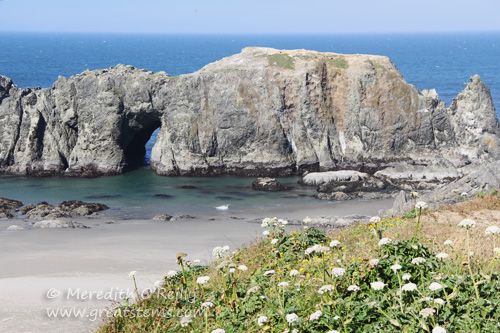
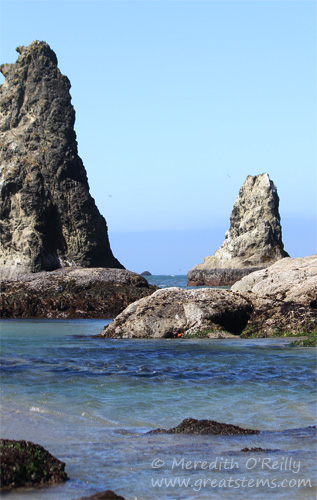


 Where there were sea stars, the mussel population was very much in control. This rock, close to the beach, shows how mussels can form massive aggregations when sea stars aren’t around. Mussels often dominate rocks between high and mid tide levels, but this rock was excessively covered, even in the lower areas where sea stars should have been happily feasting. I wonder if this rock is too close to easy human access and destruction — could this be why there weren’t any sea stars there to counter the imbalance?
Where there were sea stars, the mussel population was very much in control. This rock, close to the beach, shows how mussels can form massive aggregations when sea stars aren’t around. Mussels often dominate rocks between high and mid tide levels, but this rock was excessively covered, even in the lower areas where sea stars should have been happily feasting. I wonder if this rock is too close to easy human access and destruction — could this be why there weren’t any sea stars there to counter the imbalance? 
 On yet another rock, these sea anemones were drooping so much as the water receded, they gave the appearance of melting.
On yet another rock, these sea anemones were drooping so much as the water receded, they gave the appearance of melting. Far above the water, large colonies of Common Murres, also called Common Guillemots, nested at the top of the massive rocks. Normally, these birds spend most of their lives at sea. But they come to shore to breed. The parents don’t build nests up there — they incubate their single egg directly on the rock. Common Murres’ take-offs and flights are awkward; they are much better divers than flyers.
Far above the water, large colonies of Common Murres, also called Common Guillemots, nested at the top of the massive rocks. Normally, these birds spend most of their lives at sea. But they come to shore to breed. The parents don’t build nests up there — they incubate their single egg directly on the rock. Common Murres’ take-offs and flights are awkward; they are much better divers than flyers.
 This seal was one of the last couple that remained after the other seals were frightened away. Even though at this point the first offensive people had gone, while we were looking at tide pool life, a new family had arrived, complete with a dog running loose on the beach and a child throwing a tantrum — you can see the seal was watching them with a wary eye. I’m sure that it wasn’t long before this seal finally departed for a safer, quieter environment.
This seal was one of the last couple that remained after the other seals were frightened away. Even though at this point the first offensive people had gone, while we were looking at tide pool life, a new family had arrived, complete with a dog running loose on the beach and a child throwing a tantrum — you can see the seal was watching them with a wary eye. I’m sure that it wasn’t long before this seal finally departed for a safer, quieter environment.


 Continuing north, we stopped at an area of Oregon Dunes National Recreational Area. The dunes were tall and a blast to climb — I’d be in great shape if I could climb those every day.
Continuing north, we stopped at an area of Oregon Dunes National Recreational Area. The dunes were tall and a blast to climb — I’d be in great shape if I could climb those every day.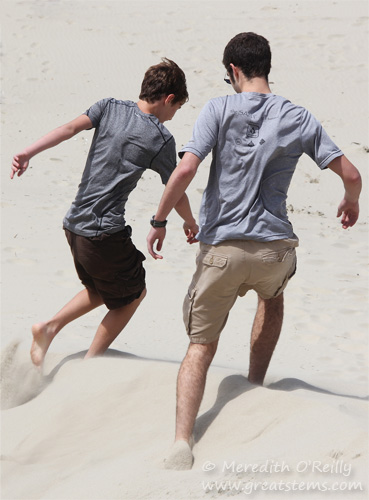 I couldn’t get the boys to roll down — they are apparently too big for that now — but they still had fun sliding, jumping, running, and chasing each other.
I couldn’t get the boys to roll down — they are apparently too big for that now — but they still had fun sliding, jumping, running, and chasing each other. Down at the shore, the wind was impressively strong. It was easy to see how the dunes were built and shaped over time.
Down at the shore, the wind was impressively strong. It was easy to see how the dunes were built and shaped over time. Leaving the dunes behind, we continued our northern trek, stopping just past Florence to visit the Sea Lion Caves.
Leaving the dunes behind, we continued our northern trek, stopping just past Florence to visit the Sea Lion Caves.
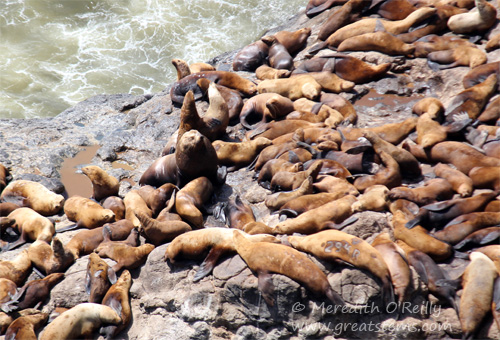

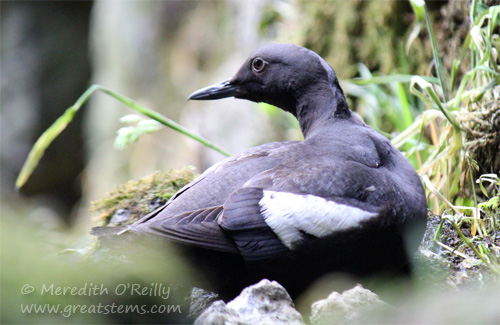
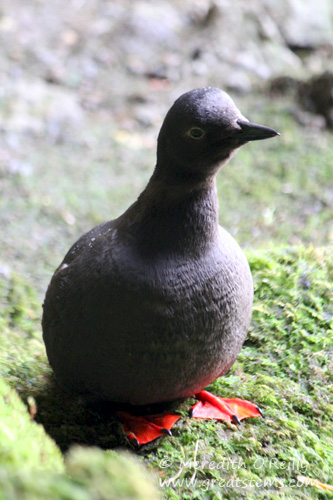
 Two miles north of the caves, we pulled into an overlook to take pictures of the famous and highly-photographed Heceta Head Lighthouse. Our old vacation nemesis, fog, returned just in time to affect our pictures. Likewise, powerful wind gusts shoved against my zoom lens — it was a challenge to walk, much less take pictures.
Two miles north of the caves, we pulled into an overlook to take pictures of the famous and highly-photographed Heceta Head Lighthouse. Our old vacation nemesis, fog, returned just in time to affect our pictures. Likewise, powerful wind gusts shoved against my zoom lens — it was a challenge to walk, much less take pictures. This gull and I shared moments of struggling to stand in the wind — the bird fared better when it nestled into a resting position. I had to take several pictures to ensure that at least one would be in focus, given how hard the wind shoved my camera around.
This gull and I shared moments of struggling to stand in the wind — the bird fared better when it nestled into a resting position. I had to take several pictures to ensure that at least one would be in focus, given how hard the wind shoved my camera around.

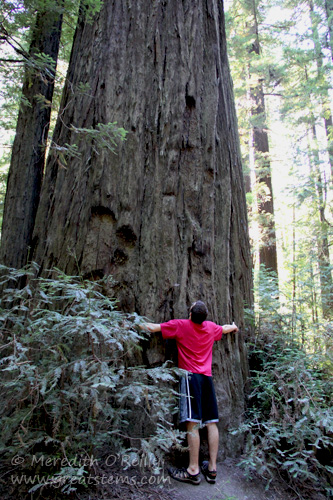
 These old trees had much to say, and we tried our best to listen.
These old trees had much to say, and we tried our best to listen.
 Plus, there were lots of banana slugs, the second-largest type of terrestrial slugs in the world. Those alone made it our kind of place. Expanding our vacation’s
Plus, there were lots of banana slugs, the second-largest type of terrestrial slugs in the world. Those alone made it our kind of place. Expanding our vacation’s 
 Yellow-spotted millipedes are also important for forest ecology, consuming leaf litter and freeing up the nutrients.
Yellow-spotted millipedes are also important for forest ecology, consuming leaf litter and freeing up the nutrients.

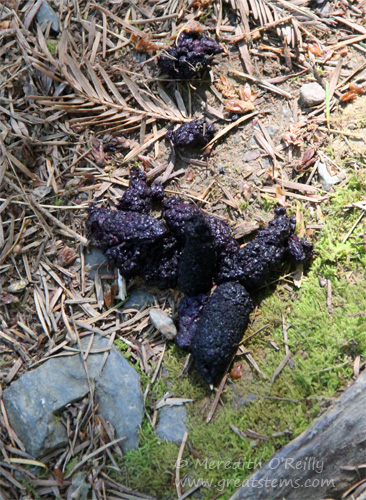
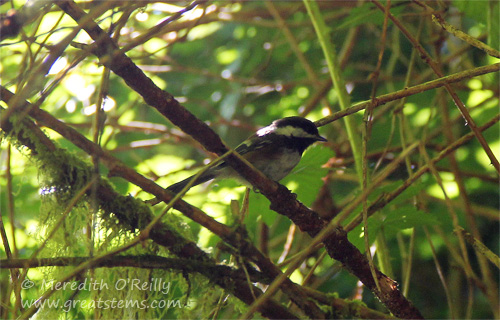 This little Chestnut-backed Chickadee was as feisty as its Carolina cousins.
This little Chestnut-backed Chickadee was as feisty as its Carolina cousins.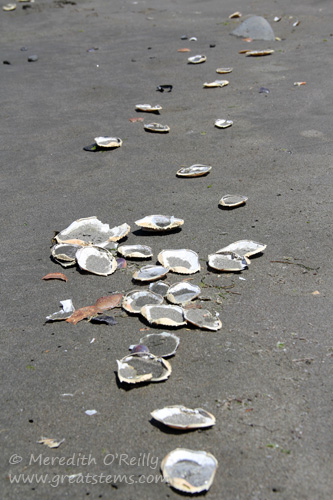 After our morning hike, we headed into Crescent City to get some laundry done, then we drove up Pebble Beach to Point St. George, a northwestern coastal headland of California and a protected site of the ancestral home of the Tolowa Indians. There coastal bluffs are covered with native grasslands and trails lead down to the shore.
After our morning hike, we headed into Crescent City to get some laundry done, then we drove up Pebble Beach to Point St. George, a northwestern coastal headland of California and a protected site of the ancestral home of the Tolowa Indians. There coastal bluffs are covered with native grasslands and trails lead down to the shore.



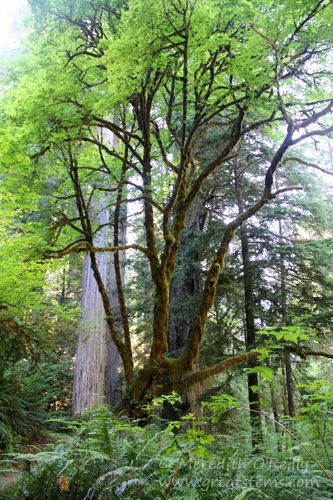

 The tranquility of the redwood forest touched our souls. We were very sorry to leave behind these majestic trees, but it was time to move on.
The tranquility of the redwood forest touched our souls. We were very sorry to leave behind these majestic trees, but it was time to move on.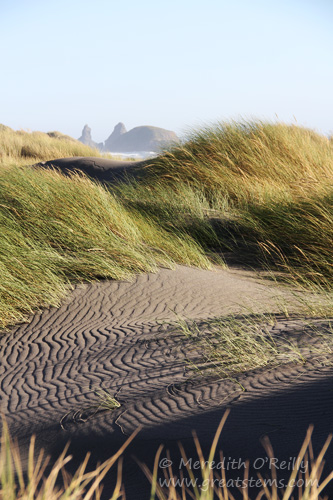





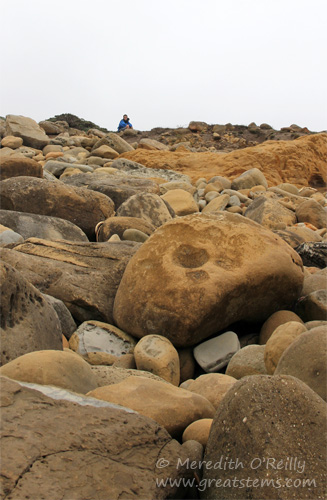
 The landscape of Salt Point is formed primarily by two major processes. Plate tectonics are responsible for the terraces along the shore, while wave action creates coves, shapes rocks, and moves rocks or carries them away. Some of the rocks are sculpted into knobs, bowls, or ribs. Others display remarkable tafoni, honeycomb-like features created by biological, chemical, and physical weathering.
The landscape of Salt Point is formed primarily by two major processes. Plate tectonics are responsible for the terraces along the shore, while wave action creates coves, shapes rocks, and moves rocks or carries them away. Some of the rocks are sculpted into knobs, bowls, or ribs. Others display remarkable tafoni, honeycomb-like features created by biological, chemical, and physical weathering.


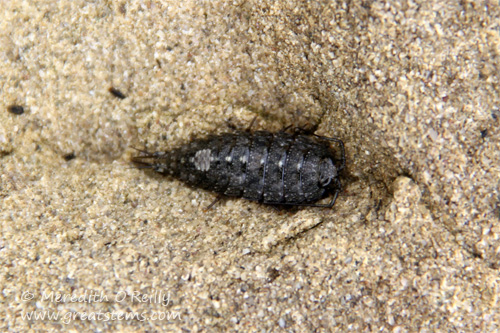










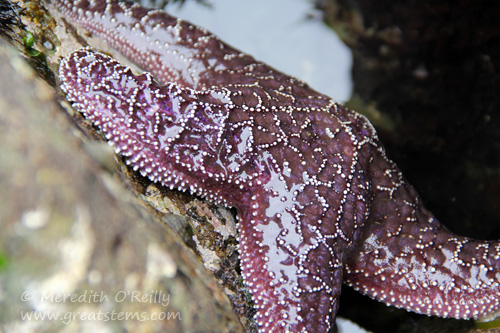

 The giant green anemone, Anthopleura xanthogrammica, has a green oral disk, with only faint radiating lines, and green tentacles. As its name implies, this anemone can get quite big. While often found alone, it will sometimes be seen in a group with other anemones without aggravation.
The giant green anemone, Anthopleura xanthogrammica, has a green oral disk, with only faint radiating lines, and green tentacles. As its name implies, this anemone can get quite big. While often found alone, it will sometimes be seen in a group with other anemones without aggravation. In contrast, a sunburst anemone, Anthopleura sola, is a solitary anemone with distinct radiating lines and pink-tipped tentacles.
In contrast, a sunburst anemone, Anthopleura sola, is a solitary anemone with distinct radiating lines and pink-tipped tentacles.  The sunburst anemone does not play nicely with others. Here is one displaying its acrorhagi, specialized stinging tentacles used when fighting with a competing anemone. I suspect the other anemone is hidden under that kelp.
The sunburst anemone does not play nicely with others. Here is one displaying its acrorhagi, specialized stinging tentacles used when fighting with a competing anemone. I suspect the other anemone is hidden under that kelp. Sunburst anemones are very similar to aggregating anemones, Anthopleura elegantissima, so much so that they were once considered the same species until molecular study proved otherwise. “Aggregating” refers to the tendency of these particular anemones to form colonies. The anemones in the colonies are actually clones, genetically identical polyps formed asexually through fission. But like their solitary cousins, an aggregating colony is still territorial and will actually engage in a battle with any encroaching anemones that don’t have the same genetic makeup. That’s why the colonies are always seen spaced apart from each other.
Sunburst anemones are very similar to aggregating anemones, Anthopleura elegantissima, so much so that they were once considered the same species until molecular study proved otherwise. “Aggregating” refers to the tendency of these particular anemones to form colonies. The anemones in the colonies are actually clones, genetically identical polyps formed asexually through fission. But like their solitary cousins, an aggregating colony is still territorial and will actually engage in a battle with any encroaching anemones that don’t have the same genetic makeup. That’s why the colonies are always seen spaced apart from each other. As the tide recedes, sea anemones expel water from their column, retract their tentacles, and fold inward in order to retain moisture within their body cavity.
As the tide recedes, sea anemones expel water from their column, retract their tentacles, and fold inward in order to retain moisture within their body cavity. 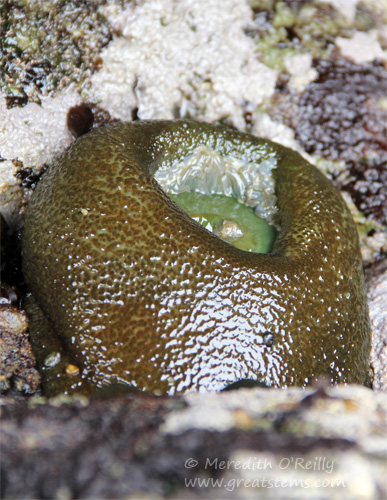 In addition to looking like an odd lump during this process, their size can be misleading.
In addition to looking like an odd lump during this process, their size can be misleading. Here an anemone is still in the process of consuming a crab, despite being interrupted by low tide. It will expel any parts it can’t digest.
Here an anemone is still in the process of consuming a crab, despite being interrupted by low tide. It will expel any parts it can’t digest.

 Black katy chitons, also called black leather chitons, are slow-moving grazers of algae and small barnacles, scraping them off with rasping, tongue-like appendages. They are effective at eroding rocks, as well.
Black katy chitons, also called black leather chitons, are slow-moving grazers of algae and small barnacles, scraping them off with rasping, tongue-like appendages. They are effective at eroding rocks, as well.
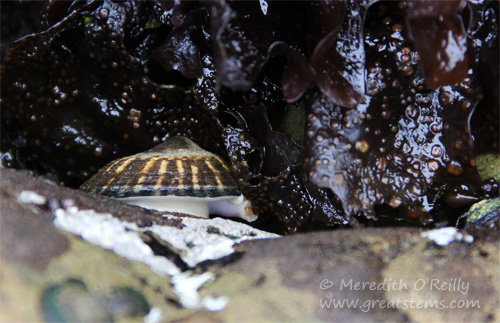 This limpet was actively moving about, and I felt quite lucky to get this picture at low tide. You can see its muscular foot, its mouth, and one of its tentacles.
This limpet was actively moving about, and I felt quite lucky to get this picture at low tide. You can see its muscular foot, its mouth, and one of its tentacles. Lastly, this is a pink acorn barnacle (Tetraclita rubescens). Unlike the aggregating barnacles of the higher intertidal zones, the pink acorn is a solitary barnacle, typically living in the mid to low intertidal zones. Note that other barnacles are actually growing on it.
Lastly, this is a pink acorn barnacle (Tetraclita rubescens). Unlike the aggregating barnacles of the higher intertidal zones, the pink acorn is a solitary barnacle, typically living in the mid to low intertidal zones. Note that other barnacles are actually growing on it.


 I adore Muir Woods. Sunlight filters through the tall trees to highlight patches of the forest floor below. Gentle creeks flow past. Fallen logs give homes to small critters. Birds call in the distance or flutter nearby, and fresh air fills one’s lungs. Moss, soft to the touch, and numerous ferns create a green garden below the canopy. It’s magical.
I adore Muir Woods. Sunlight filters through the tall trees to highlight patches of the forest floor below. Gentle creeks flow past. Fallen logs give homes to small critters. Birds call in the distance or flutter nearby, and fresh air fills one’s lungs. Moss, soft to the touch, and numerous ferns create a green garden below the canopy. It’s magical.
 The first time I went to Muir Woods was with my mother while we lived in the San Francisco area years ago. There were few people in the park that day, so we found ourselves truly immersed in the sounds and beauty of the woodlands without disturbance. In contrast, the park was quite crowded during my visit with my boys. I’d encourage my sons to tread softly and to whisper, letting the sounds of birds, running water, and rustling leaves reach our ears… then suddenly loud stomping children would race past us, or people would chat loudly on their cell phones, families would call down the path to each other, etc.
The first time I went to Muir Woods was with my mother while we lived in the San Francisco area years ago. There were few people in the park that day, so we found ourselves truly immersed in the sounds and beauty of the woodlands without disturbance. In contrast, the park was quite crowded during my visit with my boys. I’d encourage my sons to tread softly and to whisper, letting the sounds of birds, running water, and rustling leaves reach our ears… then suddenly loud stomping children would race past us, or people would chat loudly on their cell phones, families would call down the path to each other, etc.

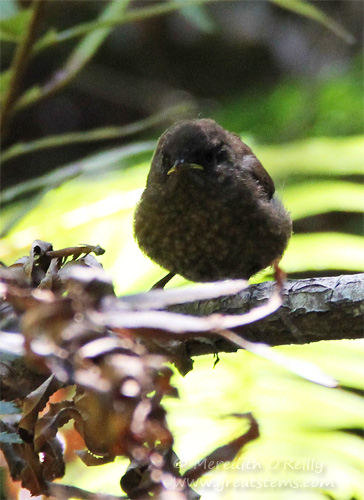


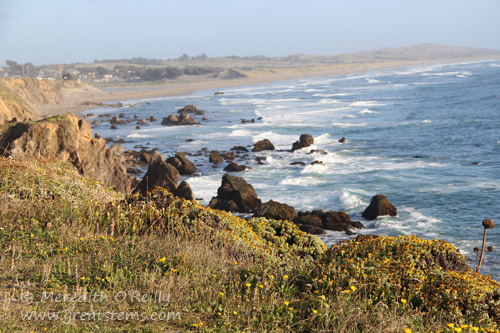


 We started, however, with a quick trip to Santa Cruz’s famous Boardwalk. We didn’t ride any rides, but I wanted the boys to experience the crowds, music, beach scene, and atmosphere of this fun seaside park. Besides, it’s the site where some parts of the American teen vampire film “The Lost Boys” were filmed in the 1980s. Each time I see that movie, I remember the feel of being at the Boardwalk from when I was a teen living in California. That soundtrack still rocks, by the way. All right, too much info about my youth — moving on.
We started, however, with a quick trip to Santa Cruz’s famous Boardwalk. We didn’t ride any rides, but I wanted the boys to experience the crowds, music, beach scene, and atmosphere of this fun seaside park. Besides, it’s the site where some parts of the American teen vampire film “The Lost Boys” were filmed in the 1980s. Each time I see that movie, I remember the feel of being at the Boardwalk from when I was a teen living in California. That soundtrack still rocks, by the way. All right, too much info about my youth — moving on.


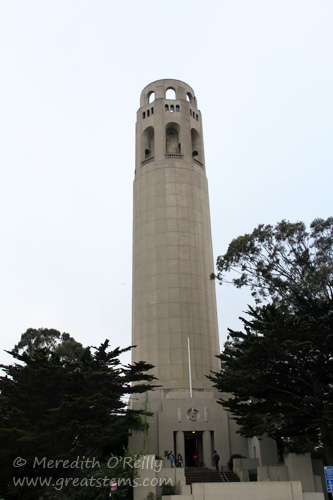



 At the Exploratorium, there is even an experiment involving guests. If you see two water fountains side-by-side, one a classic metal style and the other created from a nice, clean toilet, which fountain would you be willing to drink from? I find this a fascinating study.
At the Exploratorium, there is even an experiment involving guests. If you see two water fountains side-by-side, one a classic metal style and the other created from a nice, clean toilet, which fountain would you be willing to drink from? I find this a fascinating study. Well, the answer for our family was obvious.
Well, the answer for our family was obvious. My favorite place at the Exploratorium was the monochromatic room, a room lit by lamps that only emit a single wavelength of light. But with special flashlights, you can shine white light on photos, toy cars, clothes, and other objects in the room to discover their “true colors.”
My favorite place at the Exploratorium was the monochromatic room, a room lit by lamps that only emit a single wavelength of light. But with special flashlights, you can shine white light on photos, toy cars, clothes, and other objects in the room to discover their “true colors.”

 Not the healthiest of pigeons — perhaps it should wean itself off of leftover hot-fudge sundaes. I’m sure there is a lesson to be learned there about nutrition, but I admit we did later have our own Ghiradelli treats.
Not the healthiest of pigeons — perhaps it should wean itself off of leftover hot-fudge sundaes. I’m sure there is a lesson to be learned there about nutrition, but I admit we did later have our own Ghiradelli treats. Over at the California Academy of Science in Golden Gate Park, visitors learn about different subjects with overall more visual learning than the hands-on approach of the Exploratorium. The building houses a planetarium, a multi-story rain forest, and an aquarium. I really liked the 197,000-square-foot Living Roof, covered in specially-selected native plants that thrive on little water and can handle the salty air and wind. This eco-friendly roof keeps the interior building 10 degrees cooler than a typical roof would. For younger kids, this science museum might be the way to go, especially with the aquarium and rain forest, while older kids really get involved over at the Exploratorium. At least, that’s my take on it.
Over at the California Academy of Science in Golden Gate Park, visitors learn about different subjects with overall more visual learning than the hands-on approach of the Exploratorium. The building houses a planetarium, a multi-story rain forest, and an aquarium. I really liked the 197,000-square-foot Living Roof, covered in specially-selected native plants that thrive on little water and can handle the salty air and wind. This eco-friendly roof keeps the interior building 10 degrees cooler than a typical roof would. For younger kids, this science museum might be the way to go, especially with the aquarium and rain forest, while older kids really get involved over at the Exploratorium. At least, that’s my take on it.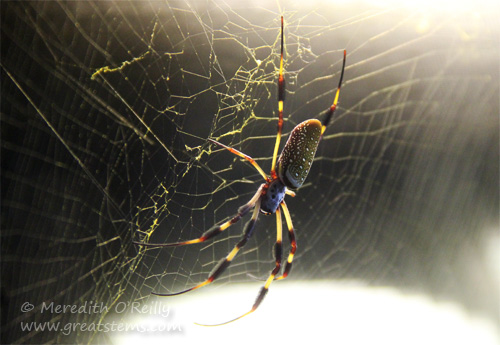 You know me, my favorite subject in the rain forest was a spider, the Golden Silk Orbweaver. These spiders weave their giant webs both in displays and openly in parts of the rain forest area.
You know me, my favorite subject in the rain forest was a spider, the Golden Silk Orbweaver. These spiders weave their giant webs both in displays and openly in parts of the rain forest area. Around town, I admired the waste bins enough to take a couple of pictures. While many cities have separate trash and recycling, San Francisco takes it a step farther and has bins for composting. It also labels the trash bin as “Landfill” — this helps people keep in mind what waste truly is and where it is going. I hope Austin gets to this point.
Around town, I admired the waste bins enough to take a couple of pictures. While many cities have separate trash and recycling, San Francisco takes it a step farther and has bins for composting. It also labels the trash bin as “Landfill” — this helps people keep in mind what waste truly is and where it is going. I hope Austin gets to this point.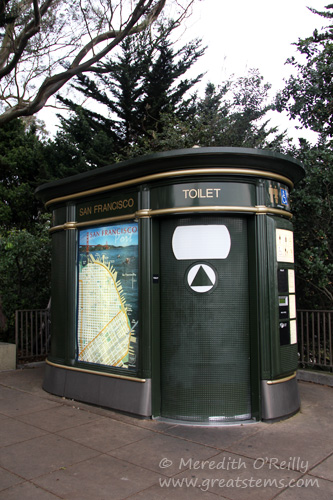


 Our short city visit over, it was time to cross the Golden Gate Bridge and get back to the coast, to redwoods, and to nature in general. Muir Woods is next!
Our short city visit over, it was time to cross the Golden Gate Bridge and get back to the coast, to redwoods, and to nature in general. Muir Woods is next!












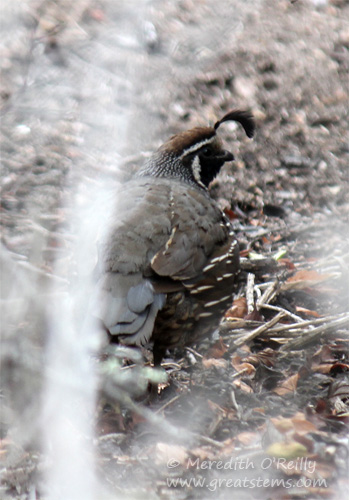




 The Cormorants were in various nesting stages while we were there, but most of the juveniles were already as large as the adults. Look closely and you will see the dry circular nests many are sitting on. It’s amusing to see the large juveniles still trying to squeeze in those nests to be pampered by their parents. Also, look at the adult Cormorant in the upper left corner of the photo and you will more clearly see the blue breeding foliage that the adults have.
The Cormorants were in various nesting stages while we were there, but most of the juveniles were already as large as the adults. Look closely and you will see the dry circular nests many are sitting on. It’s amusing to see the large juveniles still trying to squeeze in those nests to be pampered by their parents. Also, look at the adult Cormorant in the upper left corner of the photo and you will more clearly see the blue breeding foliage that the adults have. Western Gull juveniles spent time flapping and strengthening their wings, socializing, and pestering their parents for food.
Western Gull juveniles spent time flapping and strengthening their wings, socializing, and pestering their parents for food.

 As I walked along the trail, I caught a glimpse of this small bird and managed to get a few pictures. I am undecided whether this is a Wrentit or a female Bushtit. I’m leaning toward the former, but I’d appreciate birder input.
As I walked along the trail, I caught a glimpse of this small bird and managed to get a few pictures. I am undecided whether this is a Wrentit or a female Bushtit. I’m leaning toward the former, but I’d appreciate birder input.





 Sometimes we got a little wild ourselves.
Sometimes we got a little wild ourselves.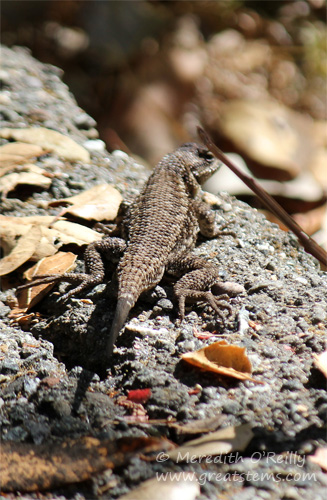

 Acorn Woodpeckers are social, busy birds. Their coloration is striking. We also spotted a Northern Flicker and some Downy Woodpeckers during our stay.
Acorn Woodpeckers are social, busy birds. Their coloration is striking. We also spotted a Northern Flicker and some Downy Woodpeckers during our stay. Within the forest, down at the base of the trees, one feels a little sheltered from the fog, but as you drive along the coast, fog can come and go and come right back again quite suddenly. Fog was our friend during our vacation — well, it sure seemed to like us because it visited a lot during our stay.
Within the forest, down at the base of the trees, one feels a little sheltered from the fog, but as you drive along the coast, fog can come and go and come right back again quite suddenly. Fog was our friend during our vacation — well, it sure seemed to like us because it visited a lot during our stay. But even the side of the highway is gorgeous. My son snapped this picture of coastal sedums and other plants while we waited for our turn on a one-lane section of Highway 1 that was being repaired.
But even the side of the highway is gorgeous. My son snapped this picture of coastal sedums and other plants while we waited for our turn on a one-lane section of Highway 1 that was being repaired. Not too far from Pfeiffer Big Sur State Park is Pfeiffer Beach, one of my favorite coastal spots along the Pacific.
Not too far from Pfeiffer Big Sur State Park is Pfeiffer Beach, one of my favorite coastal spots along the Pacific.
 We were there mid-day, and Pfeiffer is gorgeous all day long, but let me tell you that if you really want to see something spectacular, visit Pfeiffer at sunset.
We were there mid-day, and Pfeiffer is gorgeous all day long, but let me tell you that if you really want to see something spectacular, visit Pfeiffer at sunset.

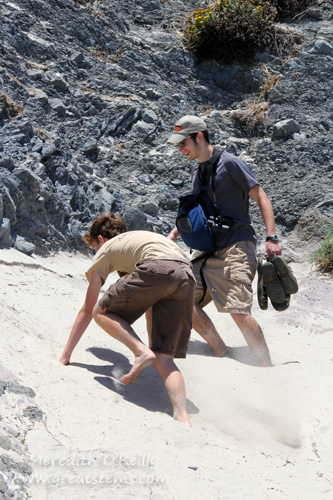

 It’s all fun and games until you whip yourself on the butt.
It’s all fun and games until you whip yourself on the butt.